Padua
| Comune di Padova | |
|---|---|
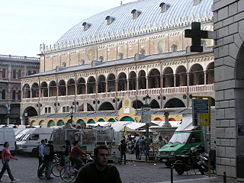 |
|
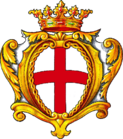 Municipal coat of arms |
|
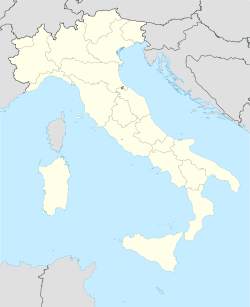 |
|
| Country | |
| Region | Veneto |
| Province | Padua (PD) |
| Mayor | Flavio Zanonato (since June 14, 2004) |
| Elevation | 12 m (39 ft) |
| Area | 92 km² (35.5 sq mi) |
| Population (as of December 31, 2004) | |
| - Total | 212,500 |
| - Density | 2,310/km² (5,983/sq mi) |
| Time zone | CET, UTC+1 |
| Coordinates | |
| Gentilic | Padovani or Patavini |
| Dialing code | 049 |
| Postal code | 35100 |
| Frazioni | Altichiero, Arcella, Bassanello, Brusegana, Camin, Chiesanuova, Forcellini, Guizza, Mandria, Montà, Mortise, Paltana, Ponte di Brenta, Ponterotto, Pontevigodarzere, Sacra Famiglia, Salboro, Stanga, Terranegra, Volta Brusegana |
| Patron | St. Anthony of Padua |
| - Day | June 13 |
| Website: www.comune.padova.it | |
Padua (Italian: Padova IPA: ['padova], Latin: Patavium, Venetian: Padoa) is a city in the Veneto, northern Italy. It is the capital of Padova province and the economic and communications hub of the province. Padua's population is 212,500 (as of 2008[update]). The city is sometimes included, with Venice (Italian Venezia), in the Padua-Venice Metropolitan Area; population 1,600,000.
Padua stands on the Bacchiglione River, 40 km west of Venice and 29km southeast of Vicenza. The Brenta River, which once ran through the city, still touches the northern districts. Its agricultural setting is the Pianura Veneta, the "Venetian plain," To the city's south west lies the Euganaean Hills, praised by Lucan and Martial, Petrarch, Ugo Foscolo, and Shelley.
The city is picturesque, with a dense network of arcaded streets opening into large communal piazze, and many bridges crossing the various branches of the Bacchiglione, which once surrounded the ancient walls like a moat.
Padua is the setting for most of the action in Shakespeare's The Taming of the Shrew.
Contents |
History
For the great desire I had to see
fair Padua, nursery of arts, I am arrived…
and am to Padua come, as he that leaves
a shallow plash to plunge in the deep, and
with satiety seeks to quench his thirst.
Antiquity
Padua claims to be the oldest city in northern Italy. According to a tradition dated at least to Virgil's Aeneid, and rediscovered by the medieval commune to glorify itself, it was founded in 1183 BC by the Trojan prince Antenor, who was supposed to have led the people of Eneti or Veneti from Paphlagonia to Italy. The city exhumed a large stone sarcophagus in the year 1274 and declared these to represent Antenor's relics.
Patavium, as Padua was known by the Romans, was inhabited by (Adriatic) Veneti. They were reputed for their excellent breed of horses and the wool of their sheep. Its men fought for the Romans at Cannae. The city was a Roman municipium since 45 BC (os 43. It became so powerful that it was reportedly able to raise two hundred thousand fighting men. Abano, which is nearby, is the birthplace of the reputed historian Livy. Padua was also the birthplace of Valerius Flaccus, Asconius Pedianus and Thrasea Paetus.
The area is said to have been Christianized by Saint Prosdocimus. He is venerated as the first bishop of the city.
Late Antiquity
The history of Padua after Late Antiquity follows the course of events common to most cities of north-eastern Italy.
Padua, in common with north-eastern Italy, suffered severely from the invasion of the Huns under Attila (452). It then passed under the Gothic kings Odoacer and Theodoric the Great. However during the Gothic War it submitted to the Greeks in 540. The city was seized again by the Goths under Totila, but was restored to the Eastern Empire by Narses in 568.
It then fell under the control of the Lombards. In 601, the city rose in revolt, against Agilulf, the Lombard king. After suffering a long (12 years) and bloody siege, it was stormed and burned by him. The Padua of Antiquity was annihilated: the remains of an amphitheater (the Arena) and some bridge foundations are all that remain of Roman Padua today. The townspeople fled to the hills and returned to eke out a living among the ruins; the ruling class abandoned the city for Laguna, according to a chronicle. The city did not easily recover from this blow, and Padua was still weak when the Franks succeeded the Lombards as masters of northern Italy.
Frankish and episcopal supremacy
At the Diet of Aix-la-Chapelle (828), the duchy and march of Friuli, in which Padua lay, was divided into four counties, one of which took its title from the city of Padua.
During the period of episcopal supremacy over the cities of northern Italy, Padua does not appear to have been either very important or very active. The general tendency of its policy throughout the war of investitures was Imperial and not Roman; and its bishops were, for the most part, Germans.
The main event of the High Middle Ages was the sack of the city by the Magyars in 899. It was many years before Padua recovered from this ravage.
Emergence of the commune
Under the surface, several important movements were taking place that were to prove formative for the later development of Padua.
At the beginning of the 11th century the citizens established a constitution, composed of a general council or legislative assembly and a credenza or executive body.
During the next century they were engaged in wars with Venice and Vicenza for the right of water-way on the Bacchiglione and the Brenta. This meant that the city grew in power and self-reliance.
The great families of Camposampiero, Este and Da Romano began to emerge and to divide the Paduan district among themselves. The citizens, in order to protect their liberties, were obliged to elect a podestà. Their choice first fell on one of the Este family.
A fire devastated Padua in 1174. This required the virtual rebuilding of the city.
The temporary success of the Lombard League helped to strengthen the towns. However their civic jealousy soon reduced them to weakness again. As a result, in 1236 Frederick II found little difficulty in establishing his tyrannical vicar Ezzelino da Romano in Padua and the neighbouring cities, where he practised frightful cruelties on the inhabitants. Ezzelino was unseated in June 1256 without civilian bloodshed, thanks to Pope Alexander IV.
Padua then enjoyed a period of calm and prosperity: the basilica of the saint was begun; and the Paduans became masters of Vicenza. The university (the third in Italy) was founded in 1222, and it flourished in the 1200s.
However the advances of Padua in the 13th century finally brought them into conflict with Can Grande della Scala, lord of Verona. In 1311 Padua had to yield to Verona.
Jacopo da Carrara was elected lord of Padua in 1318. From then till 1405, nine members of the enlightened Carraresi family succeeded one another as lords of the city, with the exception of a brief period of Scaligeri overlordship between 1328 and 1337 and two years (1388-1390) when Giangaleazzo Visconti held the town. The Carraresi period was a long period of restlessness, for the Carraresi were constantly at war. In 1387 John Hawkwood won the Battle of Castagnaro for Padova, against Giovanni Ordelaffi, for Verona.
The Carraresi period finally came to an end as power of the Visconti and of Venice grew in importance.
Venetian rule
Padua passed under Venetian rule in 1405, and so mostly remained until the fall of the Venetian Republic in 1797.
There was just a brief period when the city changed hands (in 1509) during the wars of the League of Cambray. On 10 December 1508, representatives of the Papacy, France, the Holy Roman Empire, and Ferdinand I of Spain concluded the League of Cambrai against the Republic. The agreement provided for the complete dismemberment of Venice's territory in Italy and for its partition among the signatories: Holy Roman Emperor Maximilian I of the Habsburg, was to receive Padua in addition to Verona and other territories. In 1509 Padua was taken for just a few weeks by Imperial supporters. Venetian troops quickly recovered it and successfully defended Padua during siege by Imperial troops. See the Siege of Padua page.
The city was governed by two Venetian nobles, a podestà for civil and a captain for military affairs. Each was elected for sixteen months. Under these governors, the great and small councils continued to discharge municipal business and to administer the Paduan law, contained in the statutes of 1276 and 1362. The treasury was managed by two chamberlains; and every five years the Paduans sent one of their nobles to reside as nuncio in Venice, and to watch the interests of his native town.
Venice fortified Padua with new walls, built between 1507 and 1544, with a series of monumental gates.


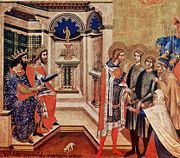


Austrian rule
In 1797 the Venetian Republic was wiped off the map by the Treaty of Campo Formio, and Padua was ceded to the Austrian Empire. After the fall of Napoleon, in 1814, the city became part of the Kingdom of Lombardy-Venetia.
The Austrians were unpopular with progressive circles in northern Italy. In Padua, the year of revolutions of 1848 saw a student revolt which on February 8 turned the University and the Caffè Pedrocchi into battlegrounds in which students and ordinary Paduans fought side by side.
Under Austrian rule, Padua began its industrial development; one of the first Italian rail tracks, Padua-Venice, was built in 1845.
In 1866 the battle of Koniggratz gave Italy the opportunity to push the Austrians out of the old Venetian republic as Padua and the rest of the Veneto were annexed to the recently united Kingdom of Italy.
Italian rule
Annexed to Italy during 1866, Padua was at the centre of the poorest area of Northern Italy, as Veneto was until 1960s. Despite this, the city flourished in the following decades both economically and socially, developing its industry, being an important agricultural market and having a very important cultural and technological centre as the University. The city hosted also a major military command and many regiments.
The 20th century
When Italy entered the Great War on 24th May 1915, Padua was chosen as the main command of the Italian Army. The king, Vittorio Emanuele III, and the commander in chief Cadorna went to live in Padua for the war period. After the defeat of Italy in the battle of Caporetto in autumn 1917, the front line was situated on the river Piave. This was just 50-60km from Padua, and the city was now in range from the Austrian artillery. However the Italian military command did not withdraw. The city was bombed several times (about 100 civilian deaths). A memorable feat was Gabriele D'Annunzio's flight to Vienna from the nearby San Pelagio Castle air field.
A year later, the danger to Padua was removed. In late October 1918, the Italian Army won the decisive battle of Vittorio Veneto (exactly a year after Caporetto), and the Austrian forces collapsed. The armistice was signed in Padua, at Villa Giusti, on 3rd November 1918, with Austria-Hungary surrendering to Italy.
During the war, industry progressed strongly, and this gave Padua a base for further post-war development. In the years immediately following the Great War, Padua developed outside the historical town, enlarging and growing in population. even if labor and social strife was rampant at the time.
As in many other areas in Italy and abroad, Padua experienced great social turmoil in the years immediately following the Great War. The city was swept by strikes and clashes, factories and fields were subject to occupation, and war veterans struggled to re-enter civilian life. Many supported a new political way: Fascism. As in other parts of Italy, the fascist party in Padua soon came to be seen as the defender of property and order against revolution. The city was also the site of one of the largest fascist mass rallies, with some 300,000 people reportedly attending one Mussolini speech.
New buildings, in typical fascist architecture, sprang up in the city. Examples can be found today in the buildings surrounding Piazza Spalato (today Piazza Insurrezione), the railway station, the new part of City Hall, and part of the Bo Palace hosting the University.
Following Italy's defeat in the Second World War on 8th September 1943, Padua became part of the Italian Social Republic, i.e., the puppet state of the Nazi occupiers. The city hosted the Ministry of Public Instruction of the new state, as well as military and militia commands and a military airport. The Resistenza, the Italian partisans, was very active against both the new fascist rule and the Nazis. One of the main leaders was the University vice-chancellor Concetto Marchesi.
Padua was bombed several times by Allied planes. The worst hit areas were the railway station and the northern district of Arcella. During one of these bombings, the beautiful Eremitani church, with Mantegna frescoes, was destroyed (considered by some art historians to be Italy's biggest wartime cultural loss).
The city was finally liberated by partisans and British troops on 28th April 1945. A small Commonwealth War Cemetery is in the west part of the city, to remember the sacrifice of these troops.
After the war, the city developed rapidly, reflecting Veneto's rise from being the poorest region in northern Italy to one of the richest and most active regions of modern Italy.
Main sights
- The Scrovegni Chapel (Italian: Cappella degli Scrovegni) is Padua's most famous sight. It houses a remarkable cycle of frescoes completed in 1305 by Giotto. It was Commissioned by Enrico degli Scrovegni, a wealthy banker, as a private chapel once attached to his family's palazzo. It is also called the "Arena Chapel" because it stands on the site of a Roman-era arena. The fresco cycle details the life of the Virgin Mary and has been acknowledged by many to be one of the most important fresco cycles in the world. Entrance to the chapel is an elaborate ordeal, as it involves spending 15 minutes prior to entrance in a climate-controlled, airlocked vault, used to stabilize the temperature between the outside world and the inside of the chapel. This is to improve preservation. Book ahead if planning a visit.
- The Palazzo della Ragione, with its great hall on the upper floor, is reputed to have the largest roof unsupported by columns in Europe; the hall is nearly rectangular, its length 81.5 m, its breadth 27 m, and its height 24 m; the walls are covered with allegorical frescoes; the building stands upon arches, and the upper storey is surrounded by an open loggia, not unlike that which surrounds the basilica of Vicenza. The Palazzo was begun in 1172 and finished in 1219. In 1306 Fra Giovanni, an Augustinian friar, covered the whole with one roof. Originally there were three roofs, spanning the three chambers into which the hall was at first divided; the internal partition walls remained till the fire of 1420, when the Venetian architects who undertook the restoration removed them, throwing all three spaces into one and forming the present great hall, the Salone. The new space was refrescoed by Nicolo' Miretto and Stefano da Ferrara, working from 1425 to 1440. Beneath the great hall, there is a centuries-old market.
- In the Piazza dei Signori is the beautiful loggia called the Gran Guardia, (1493 - 1526), and close by is the Palazzo del Capitanio, the residence of the Venetian governors, with its great door, the work of Giovanni Maria Falconetto, the Veronese architect-sculptor who introduced Renaissance architecture to Padua and who completed the door in 1532. Falconetto was the architect of Alvise Cornaro's garden loggia, (Loggia Cornaro), the first fully Renaissance building in Padua [1]. Nearby, the Cathedral, remodelled in 1552 after a design of Michelangelo. It contains works by Nicolò Semitecolo, Francesco Bassano and Giorgio Schiavone. The nearby Baptistry, consecrated in 1281, houses the most important frescoes cycle by Giusto de' Menabuoi.


- The most famous of the Paduan churches is the Basilica di Sant'Antonio da Padova, locally simply known as "Il Santo". The bones of the saint rest in a chapel richly ornamented with carved marbles, the work of various artists, among them of Sansovino and Falconetto. The basilica was begun about the year 1230 and completed in the following century. Tradition says that the building was designed by Nicola Pisano. It is covered by seven cupolas, two of them pyramidal. There are also four beautiful cloisters to visit. Sant'Antonio is treated as Vatican territory.
- Donatello's magnificent equestrian statue of the Venetian general Gattamelata (Erasmo da Narni) can be found on the piazza in front of the Basilica di Sant'Antonio da Padova. It was cast in 1453, and was the first full-size equestrian bronze cast since antiquity. It was inspired by the Marcus Aurelius equestrian sculpture at the Capitoline Hill in Rome.
- Not far from the Gattamelata statue are the St. George Oratory (13th century), with frescoes by Altichiero, and the Scuola di S. Antonio (16th century), with frescoes by Tiziano (Titian).
- One of the best known symbols of Padua is the Prato della Valle, a 90,000 m² elliptical square. This is believed to be the biggest in Europe, after Red Square in Moscow. In the centre is a wide garden surrounded by a ditch, which is lined by 78 statues portraying famous citizens.
- The abbey and the basilica of Santa Giustina. In the 15th century, it became one of the most important monasteries in the area, until it was suppressed by Napoleon in 1810. In 1919 it was reopened. The tombs of several saints are housed in the interior, including those of Justine, St. Prosdocimus, St. Maximus, St. Urius, St. Felicita, St. Julianus, as well as relics of the Apostle St. Matthias and the Evangelist St. Luke. This is home to some art, including the Martyrdom of St. Justine by Paolo Veronese. The complex was founded in the 5th century on the tomb of the namesake saint, Justine of Padua.
- The Church of the Eremitani is an Augustinian church of the 13th century, containing the tombs of Jacopo (1324) and Ubertinello (1345) da Carrara, lords of Padua, and for the chapel of SS James and Christopher, formerly illustrated by Mantegna's frescoes. This was largely destroyed by the Allies in World War II, because it was next to the Nazi headquarters. The old monastery of the church now houses the municipal art gallery.
- Santa Sofia is most likely Padova's most ancient church. The crypt was begun in the late 10th century by Venetian craftsmen. It has a basilica plan with Romanesque-Gothic interior and Byzantine elements. The apse was built in the 12th century. The edifice appears to be tilting slightly due to the soft terrain.
- The church of San Gaetano (1574-1586) was designed by Vincenzo Scamozzi, on an unusual octagonal plan. The interior, decorated with polychrome marbles, houses a precious Madonna and Child by Andrea Briosco, in Nanto stone.
- At the centre of the historical city, the buildings of Palazzo del Bò, the centre of the University
- The City Hall, called Palazzo Moroni, the wall of which is covered by the names of the Paduan deads in the different wars of Italy and which is attached to Palazzo della Ragione;
- The Caffé Pedrocchi, built in 1831 by architect Giuseppe Jappelli in neoclassical style with Egyptian influence. This is a little jewel of history and art for a café open for almost two centuries. It hosts the Risorgimento museum, and the near building of the Pedrocchino ("little Pedrocchi") in neogothic style.
- The city centre is surrounded by the 11km-long city walls, built during the early sixteenth century, by architects that included Michele Sanmicheli. There are only a few ruins left, together with two gates, of the smaller and inner thirteenth-century walls. There is also a castle, the Castello. Its main tower was transformed between 1767 and 1777 into an astronomical observatory known as Specola. However the other buildings were used as prisons during the nineteenth and twentieth centuries. They are now being restored.
- The Ponte San Lorenzo, a Roman bridge largely underground, along with the ancient Ponte Corbo, Ponte Altinate and Ponte S. Matteo
In the neighbourhood of Padua are numerous noble villas. These include:
- Villa Molin, in the Mandria fraction, designed by Vincenzo Scamozzi in 1597.
- Villa Mandiriola, (17th century), at Albignasego
- Villa Pacchierotti-Trieste (17th century), at Limena
- Villa Cittadella-Vigodarzere (19th century), at Saonara
- Villa Selvatico da Porto (15th-18th century), at Vigonza
- Villa Loredan, at Sant'Urbano.
- Villa Contarini, at Piazzola sul Brenta, built in 1546 by Palladio and enlarged in the following centuries, is the most important.
Culture
| Botanical Garden (Orto Botanico), Padua* | |
|---|---|
| UNESCO World Heritage Site | |
|
|
|
| State Party | |
| Type | Cultural |
| Criteria | ii, iii |
| Reference | 824 |
| Region** | Europe and North America |
| Inscription history | |
| Inscription | 1997 (21st Session) |
| * Name as inscribed on World Heritage List. ** Region as classified by UNESCO. |
|

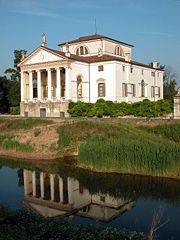
Padua has long been famous for its university, founded in 1222. Under the rule of Venice the university was governed by a board of three patricians, called the Riformatori dello Studio di Padova. The list of professors and alumni is long and illustrious, containing, among others, the names of Bembo, Sperone Speroni, the anatomist Vesalius, Copernicus, Fallopius, Fabrizio d'Acquapendente, Galileo Galilei, Pietro Pomponazzi, Reginald, later Cardinal Pole, Scaliger, Tasso and Sobieski. The university hosts the oldest anatomy theatre (built in 1594)
The university also hosts the oldest botanical garden (1545) in the world. The botanical garden Orto Botanico di Padova was founded as the garden of curative herbs attached to the University's faculty of medicine. It still contains an important collection of rare plants.
The place of Padua in the history of art is nearly as important as its place in the history of learning. The presence of the university attracted many distinguished artists, as Giotto, Fra Filippo Lippi and Donatello; and for native art there was the school of Francesco Squarcione, whence issued the great Mantegna.
Padua is also the birth place of the famous architect Andrea Palladio, whose XVIth century "ville" (country-houses) in the area of Padua, Venice, Vicenza and Treviso are among the most beautiful of Italy, and they were often copied during XVIIIth and XIXth centuries; and of Giovanni Battista Belzoni, adventure-man, engineer and egyptologist.
The famous sculptor Antonio Canova made his first work in Padua, one among the statues of Prato della Valle (now a copy stays at open air, while the original is in the Musei Civici, Civic Museums).
One the most relevant places in the life of the city has certainly been The Antonianum. Settled among Prato della Valle, the Saint Anthony church and the botanic Garden it has been built in 1897 by the Jesuit fathers, and kept alive until 2002. During WWII, under the lead of P.Messori Roncaglia SJ, it became the center of the resistance war against the Nazism. Indeed, it briefly survived P.Messori's death, and it was sold by the Jesuits in 2004. Some sites are trying to collect what can still be found of the college: (1) a no-profit pixel site is collecting links to whatever is available on the web; (2) a student association created in the college is still operating and connecting Alumni.
Demographics
In 2007, there were 210,301 people residing in Padua, located in the province of Padua, Veneto, of whom 47.1% were male and 52.9% were female. Minors (children ages 18 and younger) totalled 14.87 percent of the population compared to pensioners who number 23.72 percent. This compares with the Italian average of 18.06 percent (minors) and 19.94 percent (pensioners). The average age of Padua residents is 45 compared to the Italian average of 42. In the five years between 2002 and 2007, the population of Padua grew by 2.21 percent, while Italy as a whole grew by 3.85 percent.[2] The current birth rate of Padua is 8.49 births per 1,000 inhabitants compared to the Italian average of 9.45 births.
As of 2006, 90.66% of the population was Italian. The largest immigrant group comes from other European nations (the largest being Romanians, Moldovans, and Albanians): 5.14%, sub-saharan Africa 1.08%, and East Asia: 1.04%. Currently 1 in 5 babies born in Padua has a foreign parent. The city is predominantly Roman Catholic, but due to immigration now has some Orthodox Christian, Muslim and Hindu followers.[3][4]
Consulates
In Padua are located the consulates of: Canada, Croatia, Ivory Coast, Peru, Poland, Switzerland and Uruguay. The South Korean consulate is to be opened soon.
Economy
The industrial area of Padova was created in 1946, in the eastern part of the city; now it is one of the biggest industrial zones in Europe, having an area of 11 milion sqm. Here there are the main offices of 1300 industries employing 50,000 people. From each part of Europe goods arrive in Padua, where they are send all over the world, especially to Asia. In the industrial zone there are two train stations, one fluvial port, three truck terminals, two highway exits and a lot of connected services, hotels, post offices and directional centres.
Transport
By car
By car, there are 3 motorways (autostrade in Italian): A4 Brescia-Padova, connecting it to Verona (then to Brenner Pass, Innsbruck and Bavaria) and Milan (then Switzerland, Turin and France); A4 Padova-Venezia, to Venice then Belluno (for Dolomites holiday resorts like Cortina) Trieste and Tarvisio (for Austria, Slovenia, Croatia and Eastern Europe); A13 Bologna-Padova, to Ferrara and Bologna (then Central and South Italy). You have to pay a toll to use the most part of Italian motorways. Roads connect Padua with all the big and small centers of the region. A freeway with more than 20 exit surrounds the city, connecting districts and the small towns of the hinterland.
By train
Padua has many train stations. The largest is Padova Centrale, with 16 platforms, and is one of the biggest stations in Italy. From Padova leaves more than 450 trains per day. The station is attended by over than 20 millions passengers per year. Other train stations are Padova Ponte di Brenta, Padova San Lazzaro, Padova Campo Marte. From Padova leaves a high speed train to Milan and Venice; one can reach Milan in 1h and 51 min and Venice in 20 min.
By plane
Padua is relatively close to airports at Venice, Verona, Treviso and Bologna. The Padua airport, the "Gino Allegri" or Aeroporto civile di Padova "Gino Allegri", or Aeroporto di Padova, is no longer served by regularly scheduled flights. Padua is, however, the home of one of Italy's four Area Control Centers.
Venice, approximately 50 km away, is the nearest seaport.
Public transport
Urban public transport includes public buses together with a new Translohr guided busway (connecting southern district of Guizza to train station then to northern district of Arcella - with another three lines yet to be built) and private taxis. There's also a CitySightseeing tour Hop on Hop Off.
The centre of the city is partly closed to vehicles, except for residents and permitted vehicles. There are some car parks surrounding the district. In this area, as well, there are some streets and squares restricted to pedestrian and bicycle use only.
Padua has got approximately 40 bus lines, which are served by new buses, 1 years old, with a television that displays the line plan, the next stop, the most important monuments and the connection line and the expected waiting time for each line. Each tram/bus is equipped with security cameras and controlled by GPS.
The Veneto Region is building in Padua a metro line around the city with 15 new stations, the name will be SFMR and included the province of Venice.
Sport
Padua is the home of Calcio Padova, a football team that plays in Italy's Serie C1 division, and who played 16 Serie A championships (last 2 in 1995 and 1996, but the previous 14 between 1929 and 1962); the Petrarca Padova rugby union team, winner of 11 national championships between 1970 and 1987; and a volleyball club, once called Petrarca Padova too, which plays in the Italian first division, and who won a CEV cup in 1994. Basketball, cycling (Padua has been for several years home of the famous Giro del Veneto), rowing (two teams among the best ones in Italy, Canottieri Padova and Padova Canottaggio), horse-riding and swimming are popular sports too.
The venues of these teams are: Stadio Euganeo for football and athletic, about 32,000 seats; Stadio Plebiscito for rugby union, about 9,000 seats; Palazzetto dello Sport San Lazzaro for volleyball and basketball, about 5,000 seats; Ippodromo Breda - Le Padovanelle for horse races. The old and glorious Stadio Appiani, which hosted up to 25,000 people, reduced to 10,000 ones for security reasons twenty years ago, and near to Prato della Valle in a central area, is almost abandoned and is to be restored. A small ice stadium for skating and hockey and a new 10,000 places venue for volleyball and basketball are to be built during 2008.
The F1 racing driver Riccardo Patrese (vice-champion 1992, 3rd place in 1989 and 1991; holds the world record for having started the most Formula One races) was born and lives in Padova; the racing driver Alex Zanardi lives in Padova too. The Bergamasco brothers were also born in Padova, as well as Bortolami, of the Italian Rugby national team.
Sister cities
 Nancy, France, since 1964
Nancy, France, since 1964 Freiburg, Germany, since 1967
Freiburg, Germany, since 1967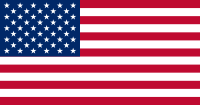 Boston, USA, since 1983
Boston, USA, since 1983 Handan, China, since 1988
Handan, China, since 1988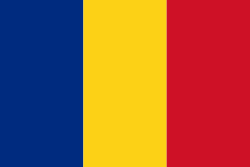 Iaşi, Romania, since 1995
Iaşi, Romania, since 1995 Beria, Mozambique, since 1995
Beria, Mozambique, since 1995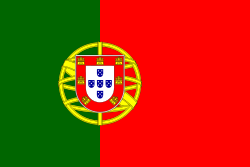 Coimbra, Portugal, since 1998
Coimbra, Portugal, since 1998 Cagliari, Italy, since 2002
Cagliari, Italy, since 2002 Zadar, Croatia, since 2003
Zadar, Croatia, since 2003
See also
- Via Anelli Wall
External links
- City of Padua Official Website
- The Basilica of St Anthony in Padua
- Photographs of Padua
- University Of Padova
- Anatomical Theater at the university of Padua
- University Botanical Garden
- Padova as a city protected by UNESCO
- Map of Padua
- Wikitravel Entry on Padua
- Video Introduction to Padua includes Scrovegni Chapel, Il Santo, and Prato della Valle
|
|||||||
